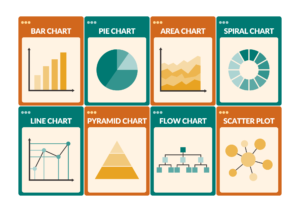Importance of Data in Deep Learning Models
Data is often called the new oil, especially when it comes to deep learning. The success of deep learning models relies heavily on the quality and quantity of data used during training. In this blog, we’ll dive into why data is so vital for deep learning models and how it can shape the accuracy and efficiency of AI systems.
The Role of Data in Deep Learning
Deep learning models, particularly neural networks, learn by analyzing vast amounts of data. Through training, the model identifies patterns, relationships, and features in the dataset, which it uses to make predictions or classifications on new data. Here’s why data is so important:
-
Training Efficiency: A deep learning model learns by analyzing examples from a dataset. Without a diverse and extensive dataset, the model can’t generalize well, leading to poor performance on unseen data.
-
Model Accuracy: High-quality data ensures that the model can distinguish between important and irrelevant features, leading to more accurate predictions. Poor data quality, on the other hand, introduces noise and bias into the model, causing incorrect outputs.
-
Preventing Overfitting: When data is limited or unbalanced, models tend to overfit, meaning they perform well on training data but fail on new data. Larger, more comprehensive datasets reduce the likelihood of overfitting by exposing the model to a wide range of scenarios.
-
Bias Reduction: A diverse dataset reduces bias in predictions. For instance, if a dataset contains disproportionate examples of a certain class, the model may become biased. Ensuring balanced data across categories helps the model make fair and unbiased predictions.
-
Generalization Capability: Models trained on varied datasets can generalize better to new, unseen data. This means they can handle real-world data more effectively because they’ve encountered similar patterns during training.
Data Quality vs. Data Quantity
Both the quantity and quality of data matter, but they play slightly different roles in model development:
-
Quantity: The more data a model has, the better it can learn. This is particularly important for deep learning models that need millions of parameters to capture patterns. However, sheer quantity without quality can lead to poor model performance.
-
Quality: High-quality data is accurate, complete, and relevant. It ensures that the model learns from true representations of the problem it’s trying to solve. Models trained on poor-quality data might make unreliable predictions.
How to Improve Data for Deep Learning ?
-
Data Collection: Ensuring you have a diverse dataset with examples from all possible scenarios is key. For some projects, this might involve collecting more data from different sources or using techniques like web scraping.
-
Data Cleaning: Cleaning the data involves handling missing values, correcting errors, and removing duplicates. This process improves the dataset’s overall quality.
-
Data Augmentation: When data is limited, augmentation techniques can help. For example, in image data, you can create new training examples by flipping, rotating, or scaling images to create more training data.
-
Labeling and Annotation: Proper labeling is critical for supervised learning. Ensure that data is accurately labeled to prevent misleading the model during training.
-
Balancing Datasets: Ensuring that classes in classification problems are well-represented across the dataset prevents the model from becoming biased toward a dominant class.
Conclusion
The importance of data in deep learning cannot be overstated. It drives the model’s ability to learn, generalize, and make accurate predictions. Without high-quality, diverse data, even the most advanced models will struggle to perform well in real-world applications. To build robust and reliable AI systems, always prioritize the data that feeds into your model.
Data is crucial in deep learning because it’s the foundation upon which models learn. High-quality, diverse data allows the model to capture underlying patterns, improve accuracy, and generalize well to unseen data. Poor data quality can lead to inaccurate predictions and biased models.
Good data quality ensures that a deep learning model learns the correct patterns and relationships within the dataset. It reduces noise and bias, leading to accurate and reliable predictions. Conversely, poor data quality introduces errors and irrelevant features, causing poor model performance.
Data quantity refers to the amount of data available for training a model. Larger datasets help the model capture a variety of patterns, reducing overfitting. Data quality, however, focuses on the accuracy, relevance, and completeness of the data. Both are essential, but high-quality data is more critical for producing reliable models.
You can ensure high-quality data by:
- Collecting diverse examples that cover various scenarios.
- Cleaning the data to remove errors, duplicates, and missing values.
- Properly labeling the data for supervised learning tasks.
- Balancing the dataset to prevent bias toward specific classes.
Data augmentation is a technique used to artificially increase the size of the training dataset by applying transformations like rotating, flipping, or scaling data (e.g., images). It improves model performance by exposing it to more diverse examples, helping it generalize better to unseen data.




